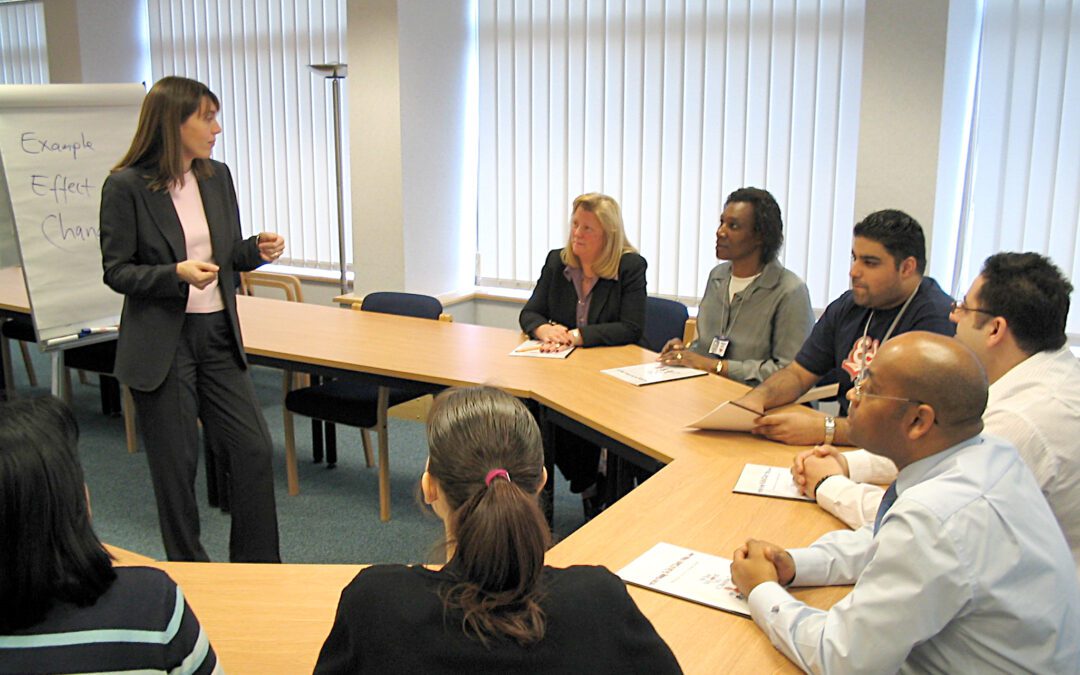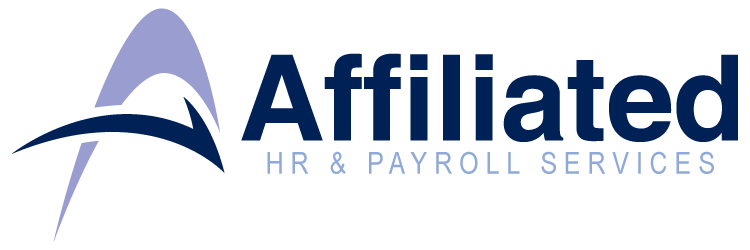
by Afilliated HR & Payroll | Jan 26, 2022 | Industrial Relations, Learning & Development, Performance Management
As we enter the new year, the risks of COVID-19 may recede, but the trauma, pain, and disruptions of these past two years will still be with us, affecting our lives and our work. We’ve all struggled, sometimes in ways we can’t pinpoint.
In her book Bearing the Unbearable, Joanne Cacciatore describes grief as “a process of expansion and contraction.” Cacciatore explains that in a moment of contraction, we may feel unsteady and unsafe, and we “feel the call to self-protect.” In a moment of expansion, we “become more willing to venture out and explore” and “take risks.” This process isn’t exclusive to grief, of course. Whatever the cause, many of us right now are experiencing one or the other, or both.
A recent guest on the HR Social Hour Half Hour Podcast, Julie Turney, founder and CEO of HR@Heart Consulting, observed that people today recognize that they deserve better, and they are demanding better. They are less willing to settle, less comfortable with the way things are. People are fleeing jobs that are physically or psychologically unsafe. Others are chasing their dreams with a newfound passion.
For the foreseeable future, people will seek environments that are both flexible and strong enough to support a process of contraction and expansion. They will desire work that gives them a safe place to be and a fulfilling place to go. They will crave a future they can own and a course they can chart, and their jobs will either help or hinder them. Jobs that help them will be in high demand.
Fortunately, such sought-after work environments can be achieved with some basic practices. Let’s look at some.
Talk About the Future
Ask your managers to talk regularly with their direct reports about how they’re feeling today and what they’d like to be doing in the future. Due to the circumstances, you can expect the answers they hear to vary and to change. On a given day, an employee may feel optimistic and ambitious, eager to take on a new project or a new role. But a week later, that same employee may feel hesitant or anxious about taking on any new responsibilities.
Don’t assume an employee expressing conflicting feelings isn’t up for the task at hand. In normal times, it’s natural to second guess big decisions, and these are not normal times. Some employees may need a little extra encouragement. Others may truly be happier continuing to do what they’ve been doing.
Through these conversations, managers can help their people make informed decisions about their future that make sense for them and for the company.
Don’t Be Afraid to Set Deadlines
Giving employees time to decide what future makes the most sense for them can go a long way to building trust and gratitude. There will come a time, however, when a decision needs to be made. A manager who has been talking with a member of their team about a new career opportunity in another part of the company, for example, will need a definitive answer eventually, probably sooner rather than later.
When a manager has a conversation with a team member about opportunities for growth that require significant change, they should, as soon as possible, make it clear to the employee when a final decision needs to be made. That way the employee has a set timeframe to work through their feelings, and a deadline isn’t unexpectedly thrust upon them.
Provide Grief Support
A lot of people are grieving, and grief takes work. People grieving need the time, space, and freedom to do that work. The option to take bereavement leave after a loss can be invaluable to them, but so too is the liberty to take days off down the road when they’re needed. The grieving process isn’t linear, and the unbearable pain of grief can resurface unexpectedly, months and years later. The life of grief is long. Whatever you can do to enable employees to safely take the time they need to process a loss and heal, do it.
Take Care of Yourself and Your HR Leaders
Lars Schmidt, founder of Amplify, points out that, while the “market for HR roles has never been hotter,” the work of HR has taken a “sustained toll” on those doing that work. They’re “carrying the emotional burdens of their employees (and their own).” Burnout is common.
Be sure to give yourself and anyone else caring for your people time to rest, recharge, grieve, or whatever else each of you needs to do to stay healthy. “Resilience is not an infinite resource,” executive coach Sarah Noll Wilson reminds us. Take time off. You need it, too.
Don’t Take Departures Personally or Draw the Wrong Conclusions
When an employee leaves an organization, it’s always a good idea to understand why and consider what changes you could have made to keep them. What you learn may not persuade that employee to reconsider their departure, but it may assist you in keeping others. That said, sometimes employees quit and there’s nothing you could have done to convince them to stay. The best possible workplace in the world will still see people go elsewhere simply because those people want a change or because of circumstances beyond their control.
When your employees tell you they’re leaving, do your due diligence to find out why, but don’t overthink their departures or take them personally. If everything was good and they still left, that just means everything was good and they still left. It doesn’t mean that you didn’t do enough or should have done something differently. Believe in the work you’re doing. Be kind to yourself. As Lars Schmidt says in his book Redefining HR, “we’re on the front lines of the highest of highs and the lowest of lows of all our employees.”
Inspire Hope
Whether we feel the strong urge to self-protect or we’re jumping out of our seat to pursue a risky venture, we could all use a little hope. The philosopher David Utsler writes, “Hope offers no guarantees. Hope does not promise that life or the world will get better. Hope only insists on the possibility.”
You can inspire hope by expanding the scope of what is possible for your employees. Talk with them about their dreams and ambitions so they can imagine what possibilities lie before them. Talk about where your company is going and what you’ll need from your employees. Help them envision a place where they can explore, take risks, and be supported.
Then work together to get there.

by Afilliated HR & Payroll | May 12, 2021 | Alert, Career Planning, Industrial Relations, Learning & Development
The pandemic taught business owners many unexpected things. Chief among them was the ability to adapt and change quickly. Businesses that preferred old-school, in-person commerce before 2020 were forced into a sudden shift during the first lockdown, adopting dozens of types of software for e-commerce and remote productivity practically overnight. And it worked out for most companies; concerns about productivity were largely unfounded. Now, as we emerge from various additional restrictions and lockdowns, attention is shifting to how and when to bring people back to the office.
The good news is that people are mostly optimistic about resuming normal activities, but there are concerns. Now is the time to address them.
Ironically, the ease with which companies transitioned to using technology is now cause for anxiety. According to a recent survey:
- 60% of employees are worried that automation will take away jobs.
- 39% think their jobs will be obsolete within five years.
- 48% believe business will shift away from a traditional employment model to a skills-based contract model.
- 56% think few people will have stable, long-term employment.
- 50% believe they’ve missed out on career opportunities or training due to discrimination.
These statistics are eye-opening and companies need to find ways to address the issues as they develop their strategic plans.
Upskilling
Upskilling is the process of learning new competencies that are relevant now and likely to remain relevant. An upskilling program must reflect the company’s learning and development strategy, but these modules represent a range of digital competencies: data, analytics, artificial intelligence and automation, blockchain, and design thinking.
Upskilling programs generally have one or more of the following components:
- Job rotation. Having employees perform different jobs in different departments gives them a hands-on view of how the company operates. It also provides the company with a clearer picture of the employee’s skills and aptitudes, which can be helpful when it comes to promotions or moving someone to a position that maximizes their potential.
- Job enlargement or enrichment. Enlarging or enriching someone’s job entails training them to perform additional tasks while at their current job.
- Peer training. There are two types of peer training. Peer coaching occurs when two or more people with different skills work together to solve problems. In the process, they learn from each other. Peer mentoring is a more formal program where an experienced employee teaches knowledge and skills to a less experienced employee.
Reskilling
Reskilling involves training employees on an entirely new set of skills to prepare them because their old role is becoming obsolete. For example, customer service representatives may be reskilled so they can respond to customer questions in a chat forum. At times, reskilling may involve obtaining a new degree or certification.
Diversity
Firm leaders need to be mindful of whom they are selecting for training programs, especially programs that are geared toward preparing employees for leadership roles. The first person you think of for training might be someone who attended your alma mater or someone you know personally because your children play together, but it’s important to extend the opportunity to everyone.
The pandemic has made people anxious about the future. Perhaps at some point in the future, Americans will be able to stop worrying about the next pandemic spike, losing sleep over their loved ones’ safety, or wondering when they will be able to find childcare or elder care. For now, it is enough to be mindful of employees’ wants and needs and to provide them with the skills and knowledge they need to do their jobs today and for the near future.

by Afilliated HR & Payroll | Apr 21, 2021 | Alert, Career Planning, Health & Safety, HR Administration, Learning & Development
OSHA’s new guidance is advisory in nature and creates no new legal obligations. However, one of President Biden’s first acts after being sworn in was to sign an Executive Order on Protecting Worker Health and Safety that directs OSHA to increase enforcement of existing agency standards and investigate whether a new standard for COVID-19 mitigation is needed. Given that, employers may want to consider the new guidelines a strong recommendation.
In a nutshell, OSHA recommends that employers and employees implement a COVID-19 prevention program that includes the following elements:
- Masks and social distancing
- A hazard assessment
- Measures to limit the spread of the virus
- Ways to identify (and send home) sick employees and policies for employee absences that don’t punish workers for staying home when sick
- Communication of coronavirus policies and procedures in both English and the primary language of non-English speaking workers
- Protections from retaliation for workers who raise coronavirus-related concerns
If you’re interested, you can learn more about the program here.

by Afilliated HR & Payroll | Mar 9, 2021 | Alert, Industrial Relations, Learning & Development
Under section 206(c) of the Taxpayer Certainty and Disaster Tax Relief Act of 2020, an employer that is eligible for the employee retention credit (ERC) can claim the ERC even if the employer has received a Small Business Interruption Loan under the Paycheck Protection Program (PPP). The eligible employer can claim the ERC on any qualified wages that are not counted as payroll costs in obtaining PPP loan forgiveness. Any wages that could count toward eligibility for the ERC or PPP loan forgiveness can be applied to either of these two programs, but not both.
If you received a PPP loan and included wages paid in the 2nd and/or 3rd quarter of 2020 as payroll costs in support of an application to obtain forgiveness of the loan (rather than claiming ERC for those wages), and your request for forgiveness was denied, you can claim the ERC related to those qualified wages on your 4th quarter 2020 Form 941, Employer’s Quarterly Federal Tax Return.
You can also report on your 4th quarter Form 941 any ERC attributable to health expenses that are qualified wages that you didn’t include on your 2nd and/or 3rd quarter Form 941.
If you choose to use this limited 4th quarter procedure, you should add the ERC attributable to these 2nd and/or 3rd quarter qualified wages and health expenses on line 11c or line 13d (as relevant) of your original 4th quarter Form 941 (along with any other ERC for qualified wages paid in the 4th quarter). You should also:
- Include the amount of these qualified wages paid during the 2nd and/or 3rd quarter (excluding health plan expenses) on line 21 of your original 4th quarter Form 941 (along with any qualified wages paid in the 4th quarter)
- Enter the same amount on Worksheet 1, Step 3, line 3a.
- Include the amount of these health plan expenses from the 2nd and/or 3rd quarter on line 22 of the 4th quarter Form 941 (along with any health expenses for the 4th quarter)
- Enter the same amount on Worksheet 1, Step 3, line 3b.
We understand this might be difficult to implement so late in the timeframe to file your 4th quarter return. You do not have to use this limited 4th quarter procedure. You can instead choose the regular process of filing an adjusted return or claim for refund for the appropriate quarter to which the additional ERC relates using Form 941-X.
Article from IRS.gov




